I recently spent some time in Lapland for the Guardian. I wrote about my trip here but thought I’d put a more complete version on the blog.
As soon as you land at Rovaniemi airport you see a reindeer. Not a real one admittedly, but somebody in a Rudolf suit cheerily greeting passengers who have just arrived and are planning to meet Santa Claus at his home in Northern Finland. A couple of miles from Rovaniemi airport –“Santa’s official airport” – is Santa Claus Village, complete with elves, reindeers, huskies, shops, restaurants and the real Santa. It’s an attraction that draws more than 600,000 annual visitors to this isolated spot on the Arctic Circle.
There are reindeers everywhere in Rovianemi. Costumed at the airport, pulling sleighs at the Santa Village and recreated in statues throughout the town centre. There is also the outline of a reindeer embedded in the city’s streets. This is the “reindeer antler plan”, which was created by Finnish architect Alvar Aalto when he rebuilt the city after the Second World War. Aalto also designed the town hall, library and concert hall, which are arranged in a complementary cluster to the south of the city centre. But while tourists flock to Santa Claus village, few seek out the work of Finland’s greatest architect. Frank Nieuvenhausen, a Dutchman living in Rovaniemi, hopes to change that through cultural tours that take in Rovaniemi’s museums, galleries and local history alongside the work of Alvar Aalto. “People get off the plane straight on a bus to the Santa Claus village but there is a rich history here,” he says. “We don’t all have to dress up as elves.”

Rovaniemi was a quiet trading town of around 6,000 people before the Second World War. Russia invaded in 1939, and the Finns fought off their aggressors in the brutal Winter War of 1939-1940. After that, they allied with the Germans. The Finns were not Nazis and the Germans were not occupiers – this was a marriage of convenience to protect the Finns from the Russians and give Germany access to St Petersburg. Finnish Jews fought the Russians alongside German soldiers – three were offered the Iron Cross. Even today, this relationship continues. A few miles outside Rovaniemi by a lake is a memorial to the German war dead. It’s a peaceful spot, both respectful and isolated. The silence is only broken by the sound of Finnish jets protecting Rovaniemi from a feared Russian incursion.
Under the terms of German-Fin alliance, the country was split in half: the Finnish Army controlled the south and the German army had the north, with access to ports and nickel mines. The Germans were based in Rovaniemi and the town’s population doubled. The Luftwaffe built an airfield – Rovaniami airport – while Santa Claus Village itself is on the site of a German barracks. For years, the Germans and Finns got on famously. Then the war turned and the Russians told the Finns to expel the Germans or the Red Army would return. As the Germans departed, Rovaniemi was razed. Photographs show a smoking ruin with just chimney stacks left standing. Pekka Ojala, who runs a B&B and sauna near the city centre, still finds burnt wood and metal in his garden.
This desolation is what Alvar Aalto faced. But his ambition was vast. “He saw the burned town as an opportunity,” says Jussi Rautsi a former planner and researcher at the Aalto Foundation. Partly inspired by Franklin Roosevelt’s Tennessee Valley Authority Plan, Aalto created a plan for all of Lapland – a land mass as large as Holland and Belgium combined. The plan started with single housing units – designed to have as little cold north-facing façade surface as possible, and maximum external surface to the sun in south-west – and expanded outwards. Aalto factored in the hydroelectric plants being built on the great rivers of Lapland, and commissioned impact assessments to see what the effect would be on the environment, population, local industries, indigenous Sami, reindeer herds, water basins and microclimate. “Nobody in the world had done such a plan,” says Rautsi. “It had all spatial levels: regional, entire town, parts of towns, neighbourhoods, even peripheral estates. This was the only plan of this magnitude in the world.”
Rovaniemi’s “reindeer antler” street plan was conceived by Aalto in 1945. This was a stroke of visionary genius, as he simply imposed a reindeer outline on existing topography like those people who find animal shapes in the London Underground map. Aalto highlighted the natural shape of the land and the way the main roads and railway crossed. The football stadium became an eye, and the reindeer was born. It was magnificent branding, but Aalto then embellished the plan, creating different zones for commerce, residential and administration within the lines of the reindeer.
All this had to be built without Marshall Aid as the Finns had been on the side of the Germans and were also paying “reparations” to the Russians. Aid did come from the United Nations Relief and Rehabilitation Administration, the precursor to UNICEF, which was brought to Rovaniemi by the UNRRA patron Eleanor Roosevelt, the wife of FDR, in June 1950. Roosevelt wanted to visit the Arctic Circle, so the Finns built a log cabin near the airport, furnished with chairs designed by Alvar Aalto. They told her it was in the Arctic Circle although it was actually a little to the south. Roosevelt sent a letter from the cabin to President Truman – the first letter ever posted in the Arctic Circle – and wrote about it in her memoir. The log cabin became tourist attraction and was visited by other world leaders, including Brezhnev and Golda Meir. The log cabin still stands today on the edge of Santa Claus Village, where it is roundly ignored by tourists.
Tourism took time to build after the war but by 1984 Concorde was bringing visitors to Rovaniemi to see the Arctic Circle. That’s when some local entrepreneurs created the Santa Claus Village. According to Finnish myth, Santa came from Korvantunturi or Ear Fell, which is shaped like an ear so Santa can hear the wishes of every child in the world. Korvantunturi is to the far north and almost inaccessible, whereas Rovaniemi already had the airport thanks to the Luftwaffe. A rural-style wooden village was created around Roosevelt’s cabin, offering shops, reindeer rides, a Santa and a post office so visitors can send letters from the Arctic Circle. This is also where every letter addressed to Father Christmas ends up – up to 700,000 a year. In the 1990s, the Santa myth took over the town. Even part of one of the town’s nuclear bunkers was turned into Santa Park, a subterranean theme park.
As tourism grew, Rovaniemi was rebuilt. The zoning aspect of Aalto’s reindeer plan was never fully realised, but he did create three buildings for the town’s municipal centre. These were an undulating concert hall, a town hall (completed by his wife after Aalto’s death in 1976) and a library that is one of his finest works. He also built a small section of housing in the suburb of Korkalovaara, which featured terraced housing and two large apartment blocks that were modelled on the garden cities of England. In the city centre, he designed a Frank Lloyd Wright-style private home and a commercial block. Not everything Aalto planned came to pass but for Raulti his successes included “climate responsive housing, separating traffic from housing neighbourhoods, using local materials, the human scale and in situ brick construction. Sound building according to nature and terrain conditions. He wanted the community to have a good and visible centre and in Rovaniemi the Aalto-centre indicates its position as the capital of the polar region.”
These are the sort of buildings that Frank Nieuvenhausen wishes to show visitors as an alternative to the Santa experience. A knowledgeable and enthusiastic guide, he is creating an Aalto tour, and is being supported in this endeavour by Rovaniemi tourist office, who want to increase visitors in the summer months. “Summer used to be bigger, then cold and dark became exotic,” says Sanna Kärkkäinen, who runs Visit Rovaniemi. “We’d like to get that balance back.”
Santa is not the only challenge. As Aira Huovinen, curator of the Korundi contemporary art gallery acknowledges, the city’s cultural attractions also compete with nature – the Northern Lights, pine forests and wildlife. With most visitors coming for less than a week, that leaves little time to visit attractions such as the Korundi or the Arkitum, a local history/science museum. It doesn’t help that the city’s appearance is dominated by a certain post-war blockiness, encouraging tourists to stick to their out-of-town hotel resorts. There are some architectural highlights. The Arkitum has a stunning glass central corridor while the Korundi is located in one of the few buildings to survive the war, a huge brick bus depot that provided locals with shelter when the city was destroyed. Joining the gallery is a lovely new concert hall built for the Lapland Chamber Orchestra, while across the highway is a delightful and award-winning football stadium (the eye of the reindeer). The chief attraction is Aalto’s library, with its sunken reading pits, beautiful lighting and open plan. In one corner is a small section dedicated to Aalto, complete with Aalto-furniture and a picture of the reindeer antler plan on the wall.
You won’t see many tourists studying this however. It’s a different matter at Santa’s Village, which is open all year round but crammed in December. The experience isn’t quite as tacky as it might sound – we’re not talking Winter Wonderland levels of crassness – and children are enraptured. The Finns’ Santa has been shorn of any religious significance but isn’t excessively commercial. “We never let our Santa go to the mall,” says Mayor Lotvonen from his Aalto-designed office in the town hall. “He is a charitable figure.” Rovaniemi’s businesses contribute to a cheque for UNICEF at the start of every season, a reminder of the fact the city’s own resurrection and current good fortune came from an act of charity.
Santa occasionally accompanies the Mayor on official business to meet trade delegations, and he is an excellent and unique ambassador for the city. The international appeal of Santa can be seen by the make-up of Rovaniemi’s visitors, which is led by China, followed by Israel and then the UK. All find a Santa they are happy with. It’s tempting to see this as another example of the Fin’s seemingly infinite capacity for accommodation. They will make the German Army feel at home, move the Arctic Circle to keep Eleanor Roosevelt happy and then balance the needs of the West and East during the Cold War. So what would Alvar Aalto make of Rovaniemi’s adoption of Santa Claus? “Aalto liked people,” says Rautsi. “He was a social person. He would make Santa ride in a chaise lounge version of his Paimio chair pulled by three reindeers and they would leave Lapland with one of Aalto’s Savoy vases in their cabin luggage.”






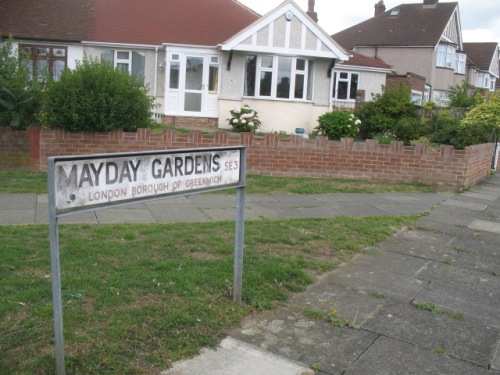



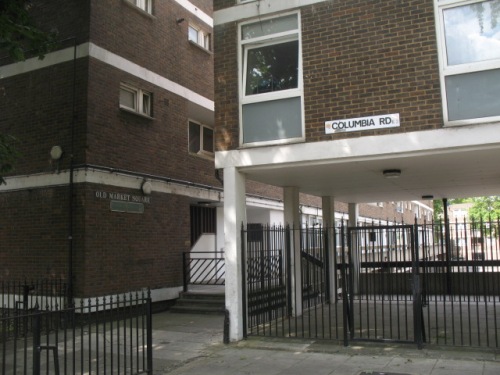




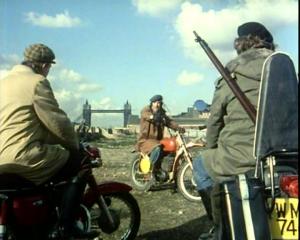




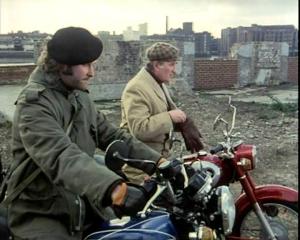





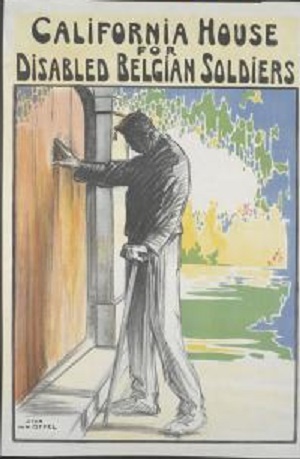










.jpeg)












